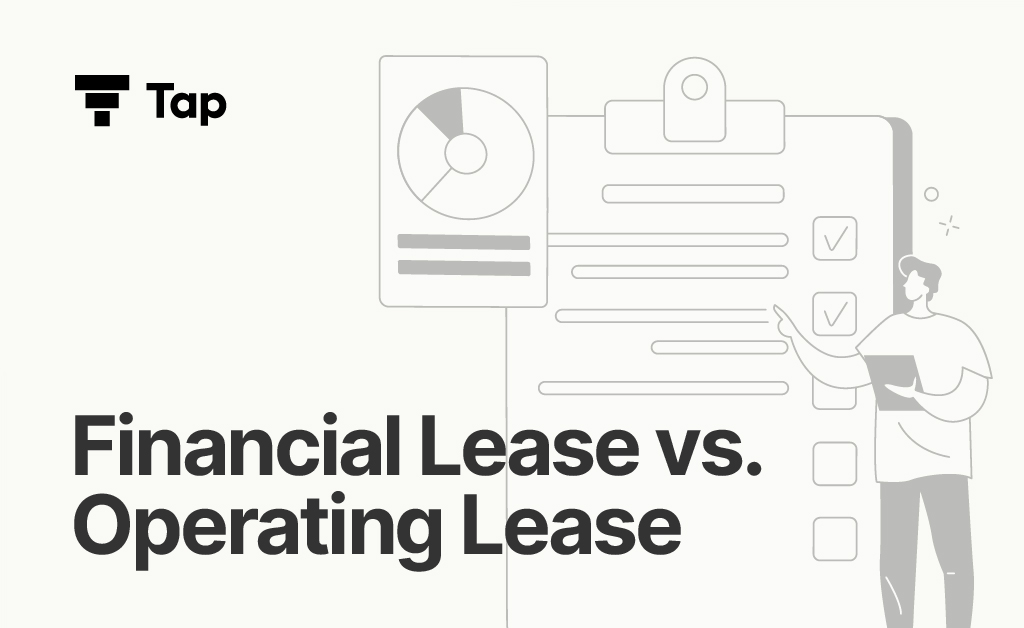Financial Lease vs. Operating Lease

When acquiring essential equipment or assets for your business without the hefty upfront costs of buying, leasing presents a practical solution. However, within the leasing landscape, two primary options emerge: financial and operating leases. Each carries its own set of advantages and considerations. Let’s delve deeper into each lease type’s specifics to help you determine the best fit for your business needs.
Understanding Financial Lease
A financial lease, akin to a step towards ownership, offers the following insights:
1. Ownership Transition: Through a financial lease, you essentially step into the owner’s shoes, with the option to purchase the asset at a predetermined price after the lease term.
2. Long-Term Commitment: Typically spanning a significant portion of the asset’s useful life, financial leases resemble more of a purchase arrangement than a rental agreement.
3. Balance Sheet Impact: Given the lessee’s assumption of ownership-like responsibilities, financial leases necessitate recording the leased asset and associated liabilities on the balance sheet.
4. Tax Treatment: Tax benefits in the form of deductions for depreciation and interest expenses may be available to lessees under financial lease arrangements.
5. Purchase Option: At the lease term’s conclusion, lessees often have the opportunity to acquire the asset at a predetermined price, offering potential long-term value and flexibility.
Exploring Operating Lease:
Contrasting with financial leases, operating leases offer shorter terms and retain ownership with the lessor. Critical insights into operating leases include:
1. Ownership Retention: The lessor maintains ownership of the asset throughout the lease term, with the lessee granted usage rights without assuming ownership.
2. Shorter-Term Arrangement: Operating leases typically cover shorter periods, affording lessees greater flexibility to adapt to evolving business needs.
3. Off-Balance Sheet Treatment: Unlike financial leases, operating leases do not require recording leased assets and liabilities on the lessee’s balance sheet, allowing for off-balance sheet financing.
4. Tax Implications: Despite not assuming ownership, lessees may still benefit from tax deductions, usually attributed to lease payments considered operating expenses.
5. Absence of Purchase Option: Operating leases typically do not include a purchase option at the lease end, limiting the lessee’s ability to acquire ownership.
Advantages and Disadvantages:
Financial Lease Advantages:
– Potential long-term ownership and asset appreciation.
– Tax deductions for depreciation and interest expenses.
– Option to purchase the asset at lease end.
Financial Lease Disadvantages:
– Long-term commitment may limit financial flexibility.
– Recorded assets and liabilities impact balance sheet ratios.
– Higher financial risk due to ownership-like responsibilities.
Operating Lease Advantages:
– Shorter-term commitment offers flexibility.
– Off-balance sheet treatment preserves financial ratios.
– Lower financial risk with reduced long-term commitment.
Operating Lease Disadvantages:
– Limited-term asset use may necessitate frequent lease renewals.
– Lack of ownership restricts potential long-term value.
– No option to purchase assets at lease end.
Choosing the Right Lease:
1. Ownership Consideration: Evaluate the importance of asset ownership in your business strategy.
2. Lease Term Assessment: Determine the optimal duration of asset utilization for your operational needs.
3. Accounting Analysis: Understand the impact of each lease type on your financial statements and reporting requirements.
4. Tax Benefit Evaluation: Consult with tax professionals to assess each lease option’s tax advantages and implications.
5. Flexibility Assessment: Consider the flexibility needed regarding lease duration and asset utilization to align with your business’s growth and operational plans.
Selecting between a financial lease and an operating lease entails carefully considering various factors, including ownership objectives, lease term preferences, economic implications, and flexibility requirements. By weighing the advantages and disadvantages of each lease type against your business’s specific needs and goals, you can puzzle out the optimal lease arrangement that aligns with your strategic vision and fosters long-term success, whether prioritizing long-term ownership potential with a financial lease or prioritizing short-term flexibility with an operating lease, making the right lease choice is integral to unlocking your business’s full potential in today’s dynamic market landscape.
